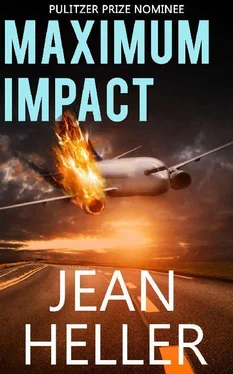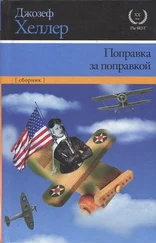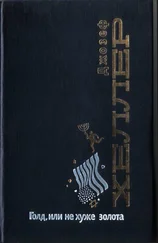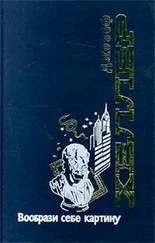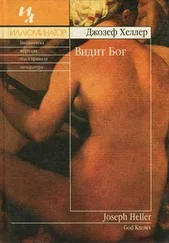* * *
No one paid attention when the slight man walked into the circle of light created by the truck-borne stadium lamps ringing the perimeter of the area in which the Sexton’s Number Two engine and right wing had come to rest. It was after 10:00 P.M., and everyone at the scene was bone-weary. The slight man was wearing proper identification; that was all anybody noticed. He carried by a handle an awkward piece of equipment that must have been heavy, for his body listed. There was a package tucked under his right arm, a length of hose coiled over his right shoulder, and something narrowly cylindrical in his right hand.
The man’s irrigation boots—the rubberized kind farmers and ranchers wear to work in muddy fields and pastures—made sucking sounds in the wet grass. Even after dark, there were plenty of people around, but most of them were involved nearly 200 yards to the south with the ongoing job of shoring up the main section of the Sexton wreckage. Davis was right about the separated engine. It sat alone, awaiting the surgical team that would autopsy it to determine what horrific malady had befallen it. Tonight no one was paying it any particular attention.
Elliott Parkhall felt enormously conspicuous nonetheless, a sensation born of guilt, for he was about to do a deed so vile he had not yet come to terms with it. He felt himself trembling as he trudged deeper and deeper into the circle of light and finally stood by the enormous engine, which, even in its crumpled state, was nearly ten feet higher than he was tall. He moved to the back side of the mass, where he was least likely to be seen, and unloaded his gear. When he was ready, he summoned a mighty force of will to push aside the conscious knowledge of what he was about to do and set about the task of doing it.
What Parkhall didn’t see were the eyes that watched him work, the eyes of a startled observer who had approached the engine from a different direction, eager to see it once more before going to bed.
The eyes belonged to Mark Antravanian, one of the aviation-industry members of the power-plants group. Antravanian was a brilliant aeronautical engineer and held an excellent position with McDonnell Douglas in Los Angeles. He should not have arrived until later that night or early the following morning. But at the time of the Sexton crash, Antravanian was in New York City on business and was able to grab the shuttle to Washington. In fact, he was performing a preliminary examination of the separated Converse engine when Parkhall was meeting with Chapman Davis on Roosevelt Island at mid-afternoon. He had made some notes, dined alone, and returned late to recheck several details of his earlier observations.
Antravanian could not fathom what the man at the engine was doing, and he would not know Parkhall’s identity until the power-plants group met as a whole the next day.
By then, it would be too late.
Friday, April 18th, 8:30 A.M.
The room was awesome, precisely as Avery Schaeffer intended.
Maximum impact was Schaeffer’s editorial style, and the his conference room just off the cavernous newsroom of the Washington Chronicle reflected the editor’s philosophy.
The thirty-five-by-twenty-three-foot area was dominated by a cherrywood conference table. Around the table were twenty-four cherry-and-leather masters’ chairs. Eighteen matching side chairs lined the room’s west wall to accommodate the overflow when special events required more personnel than regular news meetings warranted. The long east wall was solid glass, fully exploiting the breathtaking view.
The new Chronicle plant was a ten-story glass-and-brick building, almost a city block square, at Pennsylvania Avenue and 17th Street, a block west of the White House. It was one of Washington’s more prestigious business addresses. Brilliantly-tiled mosaic walls, depicting the history of American newspapers, dominated the lobby. An ancient Linotype hot-lead typesetting machine salvaged from the Chronicle’s original composing room stood vigil to the past on a display island at the lobby’s west end. Beside it, on a similar island, was a unit from the newspaper’s original press, cleaned up but not quite clean, its countenance oily and stained, its gears and rollers still breathing faint suggestions of ink and solvent. New printing plants were relegated to the suburbs: thirty-six acres of an industrial park near Rockville, Maryland, and thirty-one acres near Centreville, in Virginia. Proximity of the news and printing operations had been rendered obsolete long ago by the advent of computers and lasers.
City and suburban bureaus were scattered throughout the metropolitan area, but the big midtown building was the heart of the operation, particularly the top floors.
The ninth floor accommodated the business and features staffs, the photo department, the Metro, Virginia, and Maryland suburban sections, and the sports department. Sports, which always looked cyclone-swept, adjoined Virginia Suburban, despite Virginia Suburban’s periodic mutinous efforts to have the “games people” moved to an outdoor or underground area as far away from journalistic civilization as possible.
The tenth floor was the apex of the newspaper, literally and figuratively. It housed the editorial department and the national staff, fully 72 reporters and editors who covered the White House, Congress, every cabinet department, every government agency, and every government-related subject in town.
Schaeffer believed in hands-on journalism, so departmental editors sat at desks in the newsroom with their reporters, although each had a small windowed office along the south wall to which he or she could retreat. Schaeffer allowed himself a private office, larger than those of the other editors, separated from the newsroom only by glass lest he lose the karma of the place. He had drapes he could draw and a door he could close if a conference was private, and the door was closed on occasion, but no one could remember a single time when the drapes had been shut.
Schaeffer was slightly round, slightly bald, quick of wit, acid of tongue, and possessed of a world-class temper which, to the everlasting gratitude of most of his staff, he was able to control most of the time. He had the reputation of being a reporter’s editor.
On that rare occasion when there was an ebb in the electricity in the newsroom, Schaeffer never failed to sense it. He would heave his six feet out of his favorite chair and come bounding out of his office—invariably with tie askew and shirt-sleeves rolled to the elbows—to mingle with the troops, renew their vigor, and recharge their spirit. His unbridled enthusiasm nearly always proved infectious, and Avery Schaeffer was immodest about his ability. “It’s a gift, and I intend to use it ’til I lose it,” he said more frequently than he needed to.
But if Schaeffer was proud of his people skills, he was equally proud of his conference room. It was a paean to years of journalistic triumph; the walls were covered in a neutral but very expensive rice paper that served as backdrop for row after row of prestigious journalism awards. Plaques, scrolls, and certificates hung in meticulous order, and busts and statues—either the originals or, in cases where winners chose to take their honors home, fine replicas—rested on the cherry credenzas.
If that weren’t enough to inspire all who entered, the wall of windows looked to the southeast, past the Old Executive Office Building to the White House, the Treasury Department and beyond, up Pennsylvania Avenue to the United States Capitol—a single vista sweeping the heart and soul of the most powerful nation on earth.
Occasionally, Schaeffer would go into the conference room, close the door, and sit in silence by himself. In thirty-one years with the Chronicle, he had seen the paper fight countless journalistic wars with the secretive federal establishment, with self-important politicians, with political appointees who invariably had overdeveloped senses of self-preservation, and with fellow big-league newspapers. This room was the quintessential symbol of the battles the Chronicle had won.
Читать дальше
